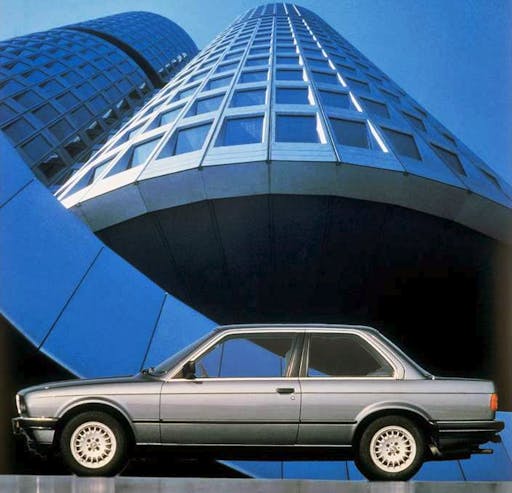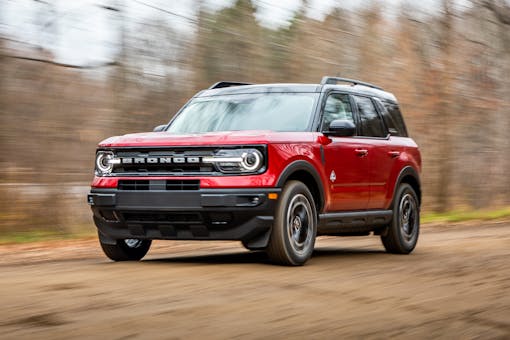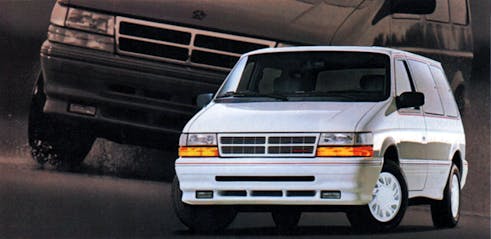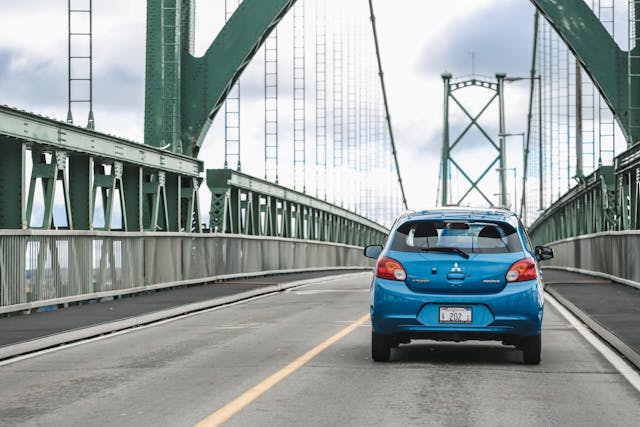Media | Articles
Our Two Cents: 7 cars that we got wrong at first
In the last episode of Our Two Cents, Hagerty Media’s staffers shared the first vehicles they reviewed in their career in the automotive media business. Some were expected, some were creative in ways that only make sense in a Web 2.0 world, but each provided an entertaining look behind the scenes.
That is our mission in this series, but Hagerty Community member @hyperv6 asked for more.
This story should have taken another path: Cars you reviewed back then that you see much differently today.
How often have we seen cars get awards that turn out to be a major lemon a few years later. Motor Trend‘s Car of the Year has suffered this fate many times. I today have many old magazines and read these reviews and now with hindsight can say this story would be much different today.
That’s a fantastic question! I posed the question to the staff here at Hagerty Media. Let’s see what cars we reviewed “back then” that we see differently today.
The Mitsubishi Mirage is actually awesome
Boy, I am glad that executive editor Eric Weiner mentioned this car. I was one of the few journalists that heaped praise on the affordable little gas-sipper—and for good reason. However, it was less about the product and more about the finances.
Should you buy the Mirage over its sub-$15K competition, or any “superior” used car? Maybe, but given the combo of a low asking price, $1000 rebate with 1.9 percent APR (this month), robust 10-year warranty, and new-car smell unavailable in used cars, you’d be forgiven for heading straight to a Mitsubishi dealer, using the extra monthly cash for food, gas, shelter, children, baby momma/daddy drama, medical bills, credit-card debt, college debt … see where I’m going with this?
Not everyone was thinking along my lines, at least back then. Eric Weiner has wisely changed his tune: “I was pretty harsh on the Mitsubishi Mirage back in 2014. It had a little to do with the fact that there were (and are) so few shameless budget cars. Now that new-car prices have gone insane, I think a cheap-but-honest thing like the Mirage is not so bad.”
Marketplace
Buy and sell classics with confidence
The Ford Maverick is now a terrible value

Matthew Fink, branded content writer and car-detailing guru, has a beef with the state of affairs for the Ford Maverick. After heaping praise on it in his review, he realized the resale world of these featherweight trucks is more than a little unfair:
I reviewed the 2022 Ford Maverick in December of 2021. I loved it and noted how impressive it was that Ford was selling a brand-new, pretty great truck for under $20,000. However, I didn’t realize how great that price really was. CarMax is selling used base, two-wheel-drive models for $33,000 now. As of this writing, I can only find three new Mavericks for sale at all central Ohio dealerships combined, and they are over $40K, loaded.
I now see that $20,000 Maverick as more of a game-changer than I realized—if Ford could keep up with demand! There is nothing even close in the market, especially considering Ford doesn’t charge extra for the hybrid now.
The BMW 318i (E30) legacy

Steven Cole Smith, our special projects editor and McFish expert, has changed his tune on the first vehicle he reviewed, a 1985 BMW 318i. While not the performance darling of the 3 Series lineup, it proved to have a staying power that he appreciates.
Of all the cars reviewed by my colleagues, few have maintained the sense of purpose mine has over the years. The BMW 318i that I reviewed doesn’t exist anymore, but the BMW 3 Series certainly does, and it has maintained its assignment as the family-sized entry-level model, despite the presence of the 1 and 2 Series. The 330i starts at $43,800 now—more, even counting inflation, than the four-cylinder 318i I tested in 1985 was—but it remains a solid, fun-to-drive car that is as happy carpooling as it is carving corners. Long live the 3 Series.
The Ford Bronco Sport is too popular

His love for Love’s truck stops may be as strong as ever, but Imola’s motorsports editor Cameron Neveu has soured on the Ford Bronco Sport. As with Fink and the Ford Maverick, it’s common to dislike a vehicle once popularity changes its trajectory.
A couple years ago, I shot the Bronco Sport early in its run. Like, really early. I don’t think I had even seen the new, big-boy Bronc’ yet, so I had hearts in my eyes for the Escape-platformed stud. Right angles, retro-inspired touches, and decent off-road capability. But now everyone and their cousin has one. They infest Michigan like whitetail deer.
In 2023, I’m less enthusiastic about the ride, sure, but I would still take it over any other compact sport utility.
Minivans need more love

Fresh from rewiring his 1996 Volvo 850 Turbo, Insider’s senior editor Eddy Eckart takes a moment to dig deeper. One of his earlier automotive experiences has matured over the years.
I’m just a spring chicken in this auto-review world, so I’m going to reach back to my youth for this one: Minivans.
I didn’t like them one bit when they infested the roads in the ’90s and was disappointed when my parents picked out a ’92 Grand Caravan (though it did its best impression of ’90s sporty in dark green with gold lace wheels). I now recognize the value of being able to haul stuff. That, and I love how automakers are still using the minivan as a platform to implement crafty innovations that maximize space or distract little humans.
The SL500 was indeed a proper Merc
Aaron Robinson, editor at large for Hagerty Drivers Club magazine, gave us a heckuva story about his time with the R230 Mercedes-Benz, so let’s get right to it.
It’s all a blur, an endless series of Corvette and 3 Series comparison tests. But one that stands out in memory is the 2003 Mercedes-Benz SL500. I was pretty hard on the styling because I thought Mercedes being Mercedes, i.e., conservative, shouldn’t have bent so much to the winds of fashion with silly design embellishments like those giant hood vents. And at the time we used to like to make fun of the Mr. Peanut headlights on all Benzes of that generation.
Mercedes was so steamed by the review that it sent a hit squad over from New Jersey to bitch up a storm in Csaba Csere’s office. He kept me out of it, which was to his credit. And now I think the design has held up pretty well and it has proven to be one of the better looking SLs.
Once I sent a mocking email to Don Sherman about a glowing review he did back in the ’80s of the Renault Fuego, in which he wrote that the car was likely to cause American gas jockeys to start speaking French with reverence.
He replied with words to the effect that I should live so long to see all my mistakes of judgement come back to haunt me.
Maybe we weren’t critical enough of the Neon

Joe DeMatio, veteran of the car-journalism industry and our magazine’s senior manager of content, takes the opposite approach. Maybe we sometimes look at cars through rose-colored glasses. As previously discussed with the Dodge Avenger, Chrysler was riding high in the saddle in the 1990s. But perhaps its story was a bit too much like that of Icarus, and the Neon and its three-speed automatic and less-than-ideal long-term quality is why it never reached the rarified air (and customer loyalty) that the Honda Civic and Toyota Corolla did. But let’s allow Joe to speak for himself.
There’s a lot that can be said, in retrospect, about Detroit’s efforts to respond to the superb cars from Japan in the 1990s, but one car in particular that kinda makes me wince now is the Dodge/Plymouth Neon. It was cheap and cheerful, and it looked great and drove incredibly well, but it was poorly bolted together and it was introduced with a three-speed automatic transmission, laughable even back then.
I distinctly remember that the trade newspaper Automotive News did a story, some time after the car launched, describing how Toyota had bought a Neon to dissect it for competitive analysis, which all automakers routinely do. Toyota operatives described the Neon as being basically a prototype. Meaning, in the Toyota manufacturing system, a production-spec Neon would be several generations of development away from being offered to the public. That’s how unrefined it was and how shoddy its construction was, compared with that of the cars against which it was ostensibly created to compete. Now, I know that many people drove Neons happily for years, and passed them along to family members who drove them for years more. I know that the car has served amateur racers faithfully and affordably for decades, and I personally had one of the best drives of my life in a Neon SRT-4 in rural Kentucky circa 1998.
One could argue that the Neon’s affordability compensated for its faults, and that Chrysler was doing the very best it could with the engineering and production resources it possessed 29 years ago. But the automotive media establishment was so eager for Detroit to score home runs, we routinely turned a blind eye to obvious failings from the home team.
***
Check out the Hagerty Media homepage so you don’t miss a single story, or better yet, bookmark it. To get our best stories delivered right to your inbox, subscribe to our newsletters.





















Back in 1983 my company rented new Dodge Caravans for a work project in San Diego. We had them loaded down and they were way underpowered with the 4 cylinder – but every place we stopped, people would ask us about this new vehicle. It was a real attention getter.
I am a proud owner of a 2020 Mirage. When I was looking for a basic cheap car, the rating by the “experts” of the Mirage were so low that I found them hard to believe. I looked into the reviews more deeply. One didn’t like the 140 mph speedometer, the door handles were old fashion and didn’t have all the electronic bells and whistles. Almost off hand, they did mention the comfort of the front seats and surprising room in the front, 40 miles per gallon and great warranty. Yes the CVT sucks, they all do, and the car could use about 10 more bhp. What do you want for under $20,000?
This was the first vehicle I had ever seen that threw misfire codes after 30k miles on spark plugs. LOL.
Sadly, Toyota’s description of the Neon can be said about nearly every single car or truck built in the past 16 years.
Two comments, as a young driver when the Chrysler minivans were announced, I remember thinking, “How sexy is that!” You can get the panache of a van, like Grateful Dead fans and the economy and lower maintenance expense of a small vehicle. It’s like a sports car van. The six cylinder was the first vehicle I ever owned that could leave rubber.
Then the soccer moms realized what a breakthrough in convenience and utility they offered and minivans were judged by the company they kept.
I always thought minivans were unfairly judged. We bought a new Plymouth Voyager early in the run and I told the dealer I wanted a six-cylinder and a roof rack and that’s all-no Family Option Plan or Popular Option Package. He agreed that the 4 cylinder was a poor option. It is a utilitarian vehicle and owners of a four would always come back and complain.
I took out the middle Captains seats and moved the rear bench forward. It became a limo/pick-up hybrid; lots of legroom and lots of carrying capacity.
I recently replaced a 15 y/o Hyundai Tucson crossover with a stick (I loved that car!) with a used Nissan LEAF EV.
Going from three pedals to one pedal was easier than all the car magazines said. It’s very intuitive and drives like a magic carpet.
A ‘fill-up’ costs $4.61, amazing pick-up and this environmentally friendly car offsets the emissions from my 71 MGB.
Enough EVs have been sold and the offerings are improving so fast, that there are used options on the market with meat still left on the bone.
I paid $25k for a 2019 that looks new and will get $4k back on my taxes.
It is simple, low-tech. No burled rosewood interior from some endangered rainforest The maintenance recommendations at 40,000 miles suggests, “Rotate your tires.”
The reviews for the LEAF are lukewarm, but it is exactly what it says it is, an entry-level vehicle for people who want a sharp car that is fun to drive and friendly to the planet. Used, it was cheap to buy, cheap to run, easy to maintain and in years to come it will probably make it to articles like this one.
Loved my 95 Neon, purchased off Chrysler’s CDI lot with just a few thousand miles. Why buy a three speed automatic when a five speed manual was available? That and leather seats made it unique and a blast to drive.
AT FIRST GLANCE THE NEW BRONCO LOOKS LIKE A 60’S SCOUT, OH WELL. WHY DO THE AMERICAN CAR COMPANIES DESIGN A CAR AFTER EUROPEAN MODELS? CAN’T AMERICAN CAR COPANIES SET THE BENCH MARK? AND ONCE AND FOR ALL, IT’S A CORVETTE STEERING WHEEL IN A VEGA! NOT THE OTHER WAY AROUND. NOVA’S AND CHEVELLE’S HAD THAT WHEEL TOO.
I bought a brand-new Mirage in 2015. And loaded up as one could be. I loved it because for a cheap car it did all the basics well, comfortable seat, great MPGs, real fine heat and a/c. But I traded it in after six months because Mitsubishi missed one basic that I just couldn’t stand. The electric p/s steering.
Like a lot of cars, it steered nice and easy at parking lot speeds. But get up to about 45MPH and it would stiffen up–extremely so. Driving on the expressway was maddening. A ridiculous amount of effort to keep it in the lane. And worse, being a lightweight car, expressway driving on windy days was a tremendous effort literally hurting my elbows, wrists and shoulder joints. I’d gone back to the dealership three times and each time they promised me that the steering was operating correctly. If I could have figured out the electronics of the damn electric p/s I would have wired it to full-time maximum assist, and that would have made me very happy. I wanted to just remove the electric motor, but the dealer forewarned me that wouldn’t work because it was designed into the steering column. Plus, I’d get a warning light persistently flashing. And it would void my warrantee. I tried getting through to talk to engineers at Mitsubishi, but the gatekeeper wouldn’t put me through. After six months I’d have killed for a ’75 Buick LeSabre or the like.
I test drove a Smart car with p/s and it had the same expressway steering as the Mirage. I replaced the Mirage with a Smart car without p/s and that drove good, I even learned a way to speed-shift it.
The moral of my story is that, after all the years of complaints from writers at big automotive magazines regarding soft power steering, they ended up winning! Younger guys might not know it, but you used to be able to cruise for hours on an expressway with just your thumbs at the bottom of the steering wheel.
Our 2 cents: Neons
Looks like we have a time traveler driving an SRT4 Neon in 1998, if I read that correctly. I haven’t been able to do that with mine; where can I get that kit.
Glad to see the BMW 318i featured on this list. Owning our very nice 1991 convertible for the last 8 years has felt like cheating the system. Such a balanced and fun car to drive, getting in for silly-low money, making easy improvements and watching the value rise significantly, has made our ownership experience pretty much ideal. Don’t see many for sale these days but good deals still come up from time to time.